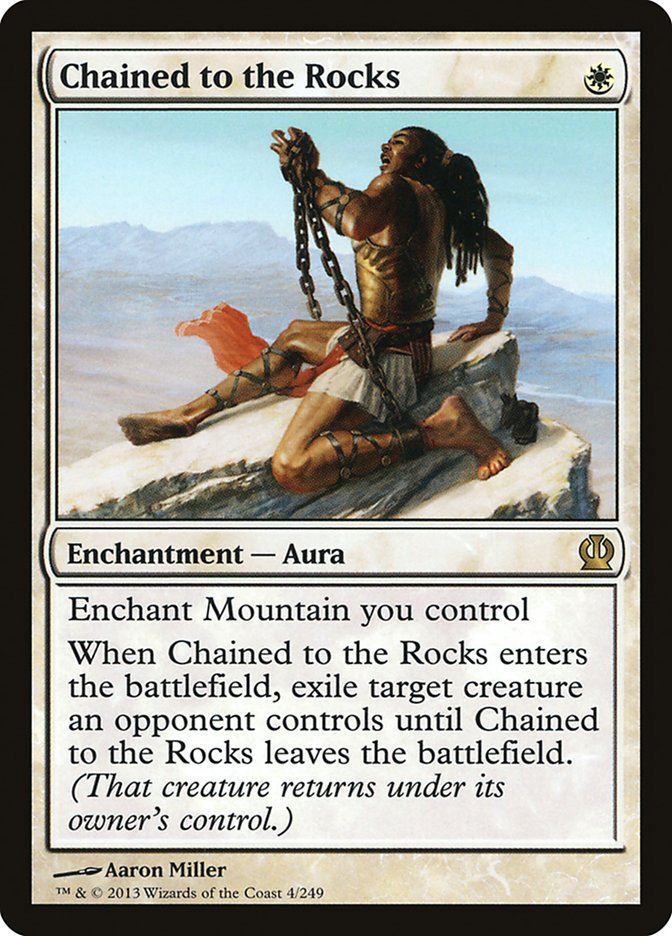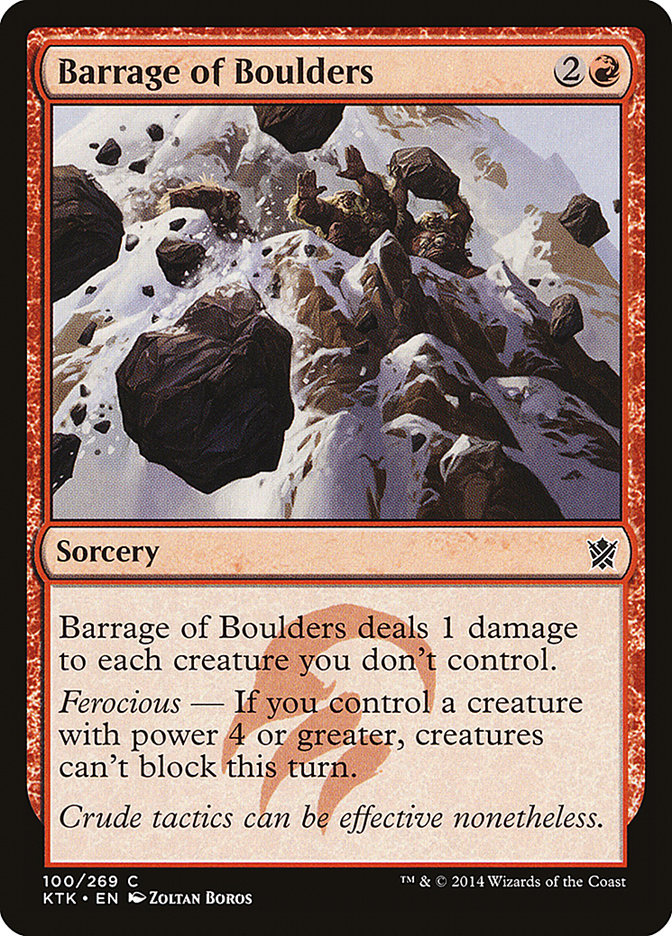What?
You’re telling me Dragons of Tarkir comes out in one month?
What happened to Fate Reforged?
This isn’t the first time a large third set following a small second set has created an almost comically small length of time to explore a Standard format.
With the Pro Tour Modern instead of Standard, there has been less focus than usual on the format…
…And these are its last days!
The Dragons of Tarkir Prerelease is in literally five weeks!
These days, it’s usually an impressive feat when a Standard format manages to make it to the next set without getting stale or stagnant. Khans of Tarkir
succeeded despite a long life in the wild. Fate Reforged will almost assuredly succeed, but it’s such a different game when the format gets so much less
focus.
This past weekend, we had two major Standard tournaments, revealing the new Standard format really has taken on a different texture from the previous.
There are plenty of familiar faces, no question, but the number of Fate Reforged cards seeing play is shocking. Literally 28 different Fate Reforged cards
(not counting the land reprints) made day 2 of GP Seville!
Fate Reforged Cards in Day 2 of GP Seville

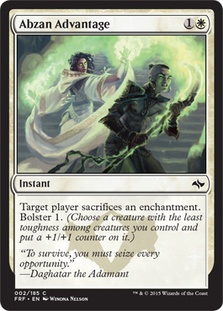
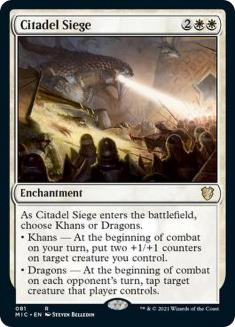
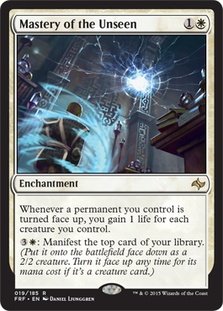
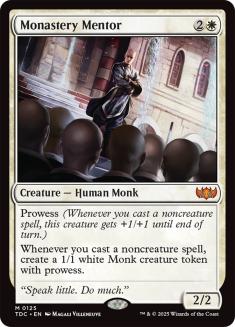
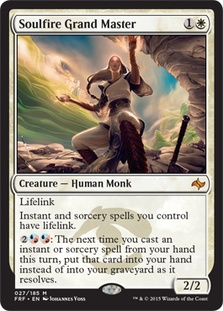
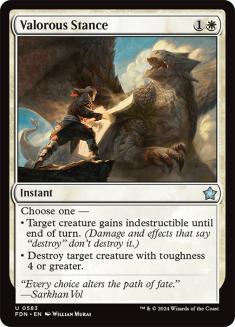
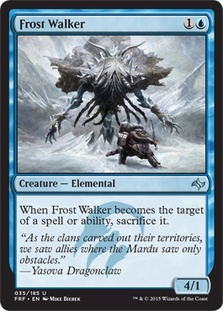
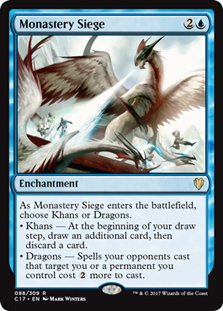
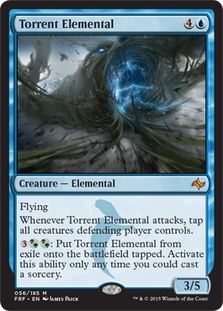
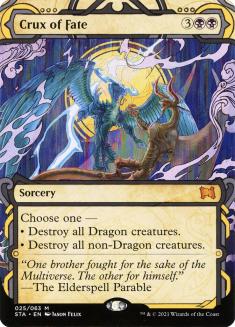
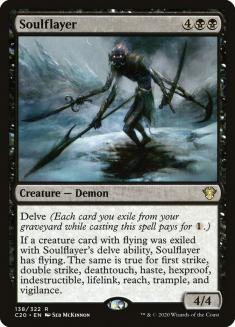
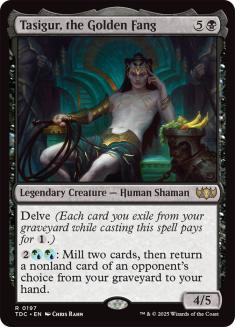
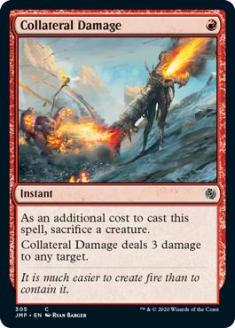
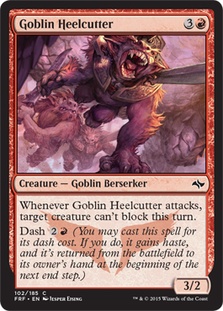
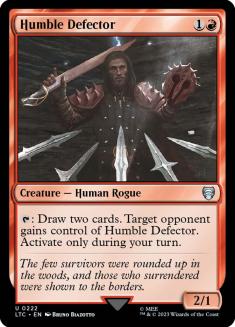
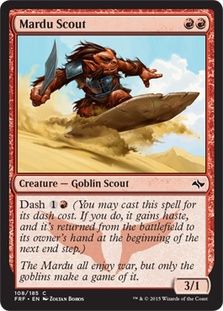
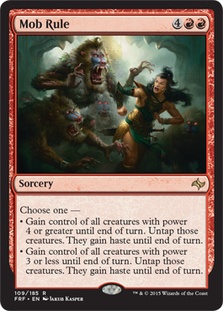
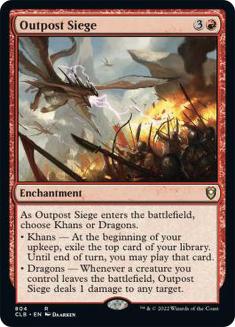
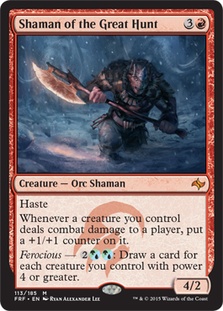

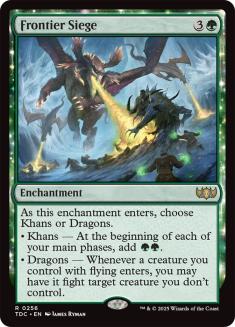
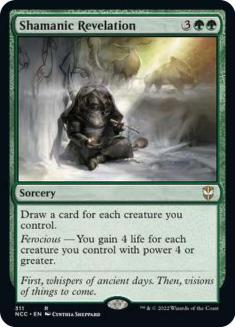
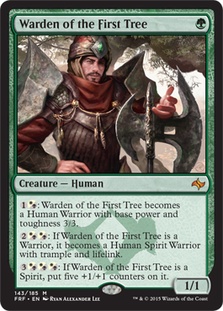
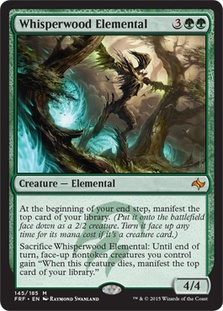
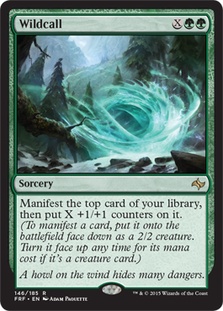
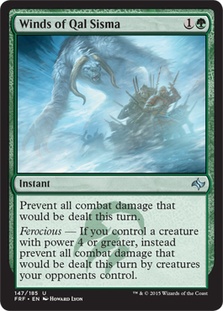
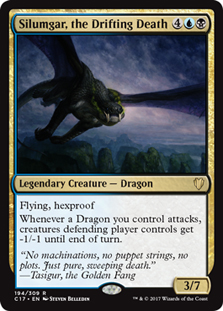

As is probably obvious, that is a lot for a small set, and the power is spread out across colors and archetypes. There are also a number of powerful cards
that have not yet found homes but have a lot of potential.
To get an idea of where Standard is at, let’s look at the Day 2 metagames of GP Seville and SCG Houston. As a note, now that the SCG Opens are two day
events with $20,000 prize purses, they really are becoming more and more like Grand Prix.
Typically, we only have access to the top 8 decklists at a Grand Prix, and maybe the day 2 metagame by percentage with little information archetype
performance. Frank Karsten and the rest of the GP Seville coverage team went above and beyond, entering by hand every single player’s decklist that made
day 2 and their records.
This reveals some pretty interesting stuff. For instance, take a look at the top 8:
Grand Prix Fate Reforged Top 8
U/B Control: 1st
Abzan Aggro: 2nd, Top 4
G/R Aggro: Top 4
Jeskai Aggro: Top 8
W/U Heroic: Top 8
Green Devotion: Top 8
Sultai Reanimator: Top 8
The picture it paints is useful, to be sure, but there is so little data there. With all of this day 2 information we have access to this time, new
perspectives emerge. For instance, the W/U Heroic deck by Marcos Antonio Cordero Valle was the only W/U Heroic deck in day 2 of the event.
Even more interesting is the story of R/W Aggro, which is quietly the most popular deck in Standard, yet failed to put anyone in the actual top 8!
Here’s a breakdown of the day 2 metagames of both events. SCG Houston data is just raw percentages, while we have the luxury of weighing the GP Seville
data by wins. I went through and added up every single win of every archetype (which includes their day 1 wins) and divided by the total, yielding the
following:
Fate Reforged Day 2 Metagame
|
Archetype |
GP Seville Day 2 |
SCG Houston Day 2 |
|
Abzan Aggro |
17.0% |
10.5% |
|
R/W Aggro |
15.2% |
15.8% |
|
G/R Aggro |
11.4% |
9.5% |
|
Sultai Control |
7.3% |
2.1% |
|
Sultai Reanimator* |
6.7% |
6.3% |
|
Green Devotion |
6.5% |
9.5% |
|
Red Aggro |
6.2% |
6.3% |
|
Jeskai Tokens |
5.7% |
5.3% |
|
Jeskai Aggro |
5.4% |
2.1% |
|
U/B Control |
4.7% |
7.4% |
|
Temur |
4.2% |
3.2% |
|
Abzan Midrange |
4.1% |
13.7% |
|
Misc** |
5.5% |
5.3% |
*Sultai Reanimator includes G/b Whip decks
**Misc = W/U Heroic, Jeskai Heroic, Ascendancy Combo, Esper Control, U/W Control, Mardu Midrange, and Chromanticore/Soulflayer.
The metagame on both sides of the ocean was fairly similar other than the massive popularity of Abzan Midrange in the US, while the former “best deck” was
barely more than fringe in Europe. Of course, if you combine the two Abzan archetypes, we see similar numbers in both events.
Sultai Control decks descended from Gerard Fabiano’s winning list from a few weeks ago were fairly successful at the GP. US players that would have played
such a deck tended to play U/B Control instead. U/B wasn’t very popular at the GP, but it did win the event, continuing the recent trend of U/B decks
showing up in small numbers but performing well deep in large events.
Probably the largest difference between today’s format and the previous one is the rampant popularity of R/W Aggro. It isn’t really a single printing that
has made this archetype possible, but rather enough new roleplayers to fill out the list and make up for the lack of a third color. For the most part, the
R/W Aggro decks really are just Jeskai decks without the blue cards.
R/W Aggro by CAMARGO GÁLVEZ, RAFAEL 11th at GP Seville 2015
Creatures (17)
- 4 Stormbreath Dragon
- 2 Brimaz, King of Oreskos
- 4 Goblin Rabblemaster
- 2 Ashcloud Phoenix
- 4 Seeker of the Way
- 1 Soulfire Grand Master
Lands (24)
Spells (19)
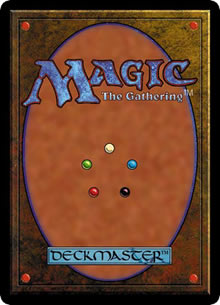
Why give up Mantis Rider/Jeskai Ascendancy/Jeskai Charm/Treasure Cruise?
Chained to the Rocks is much harder to use in three-color decks than most “gold cards,” but it is extremely powerful. I would guess we will see an increase
in popularity of enchantment removal, like Abzan Advantage, next week.
In addition to having a manabase that almost entirely enters the battlefield untapped, R/W Aggro makes good use of a number of Fate Reforged cards.
Outpost Siege has largely replaced Chandra, Pyromaster in many decks. The default setting is to choose “Khans,” making Outpost Siege a sort of planeswalker
that can never be attacked. This is an extremely powerful way to beat slower midrange or control decks by burying them under a torrent of card advantage.
Yes, sometimes they can use Ugin, the Spirit Dragon to catch up, but eight mana can take a while, and they can be pretty far behind at that point. Besides,
R/W Aggro is pretty respectable at trading cards with people, so if it happens to stick an Outpost Siege, it can adopt a controlling, midrange-y stance to
great effect.
Of course, Outpost Siege is not all upside compared to Chandra. First of all, it doesn’t draw you a card immediately. Chandra doesn’t always, but she can
always do something. Besides, if you are looking for that fifth mana, she does give you another look.
Outpost Siege can be destroyed by enchantment removal, which is more rare than planeswalker kill, but is often more efficient. Chained to the Rocks already
ensures that enchantment removal will be solid gold against this deck though, so instead it just embraces the weakness and tries to get paid as much as
possible.
Finally, Outpost Siege doesn’t have Chandra’s other two abilities. Very little of Chandra’s power comes from her ultimate, but her plus ability can be very
effective at removing blockers and killing tokens. Of course, Outpost Siege has a second ability, you just have to be willing to commit to it.
Outpost Siege’s ability is at its best when you’re ahead of your opponent on the board. It adds to our inevitability, moving the game towards a direction
in which your opponent is dead whether they kill your creatures or not.
One of the most hyped and controversial cards in Fate Reforged, Soulfire Grand Master has proven itself a mainstay in both R/W Aggro and Jeskai decks of
all flavors. The extra life from your burn spells and its own lifelink is great, of course, but its ability to completely take over a lategame if unchecked
is what makes it a powerhouse.
The most intriguing part of Soulfire Grand Master’s life in Standard has been the split between people using four copies and people using exactly one.
Almost nobody plays two or three. Why? I know that I find myself putting one Soulfire Grand Master in a lot of decks, so I get it, I really do, diminishing
returns and all. The thing is, if Soulfire Grand Master is really so strong that a big chunk of people want to play the full four, it really suggests that
the diminishing returns might be overstated.
If I was someone that had been playing one, I might try adding a second and see how it goes. Yeah, maybe we end up going up to four, maybe we decide we
really do only want one; I just think this card, more than almost any other, has people playing one copy a suspiciously high amount. If it’s really not
good enough for a bunch of those people to play two, I would guess that some of them should actually be playing zero. This is just such an unlikely
distribution.
This unassuming removal spell/combat trick has quickly become a format staple, making appearances in R/W, Jeskai, Abzan, and Heroic. It’s generally always
at least “fine” as long as you have creatures worth protecting. Where it gets awesome is against green and black creatures, like Courser of Kruphix, Siege
Rhino, Butcher of the Horde, Polukranos, World Eater, Doomwake Giant, and Tasigur, the Golden Fang. Whenever green and black decks get too popular, people
should rightly add more Valorous Stances to their white creature decks.
Valorous Stance is particularly valuable to decks relying on Lightning Strike or Bile Blight, as it gives you an efficient way to round out your removal
suite. It’s not appropriate for every deck, as you really do need to have creatures worth protecting; but Goblin Rabblemaster, Seeker of the Way, Soulfire
Grand Master, and Brimaz add up to more than enough. Just be careful, as you can’t Valorous Stance your Stormbreath Dragons.
My guess is that Valorous Stance is still underplayed, as the card is just so versatile. I wouldn’t be surprised if three ends up an extremely common
number, as the first is almost always very useful, while the second can be pretty slow against some people.
Monastery Mentor out of the sideboard is an interesting choice here, as the maindeck already has people looking to sideboard every bit of removal they can
get their hands on. The key is that some decks don’t have access to much, and Monastery Mentor really shines there, completely taking over some games.
Meanwhile, it’s also another threat we can board in against control decks, taking out burn spells that don’t have good targets.
Why not just maindeck the Mentors? Without blue cards, R/W can run out of gas and not be able to fuel the Mentor as well as some decks can. I’d guess we
often see Monastery Mentor in R/W Aggro maindecks, but it is not uncuttable.
This card is 99.9% always just Shock, so it’s funny how much more into it people have have been, but Shock is also a reasonable card and a great one in
some metagames. While I generally prefer Arc Lightning as a sideboard card right now, I like a mixture. Against tokens, you’d generally prefer Arc
Lightning, but against other fast aggro decks, drawing one of each is often better.
While not a new card, Barrage of Boulders is showing up more and more often. It’s a very potent anti-token weapon, and the ferocity kicker gives it enough
extra juice to be worth using against Hornet Queen decks as long as you have legit ways of triggering it. Stormbreath Dragon and Ashcloud Phoenix are the
main ones here, but a Lightning Strike in the same turn makes Seeker of the Way count.
Goblin Rabblemaster is an odd duck when it comes to ferocity. It usually doesn’t work with them, but some of them actually line up right, such as a
post-combat Shamanic Revelation or when you want to Stubborn Denial someone’s Devouring Light.
Just a minor point, but Wind-Scarred Crag being kept to extremely minimal numbers makes a lot of sense in Chained to the Rocks decks. It doesn’t count as a
Mountain, which is the true red mana bottleneck. This makes it mostly just a Plains that comes into play tapped. The reason to use it at all is that it
does help cast double red spells early, like Hordeling Outburst. There is plenty of room to play more tapped lands here if you want, just make sure that if
you decide that is something you want to do, you cut Plains.
Honestly, I wouldn’t mind a single Temple of Enlightenment. Yes, one of the advantages of playing two colors is having your mana come into play untapped,
but there is more room between the 4-5 some decks play and the 10-12 other decks play. Every game you play an untapped land on turn 1 without any one-drops
in your deck, you are sacrificing some value.
It really just comes down to how bad for you is it to draw two tapped lands? A deck with five has at least one in its opening hand 47.5% of the time, with
a 10.0% chance of drawing two or more. Add a sixth and now you’re looking at 54.1% of the time and a 14.1% chance of drawing two or more. That’s an
increase of 6.6% total for having one, while only a 4.1% increase of drawing two or more.
If you value having an untapped land on turn 1 as being as good as drawing two in your opening hand is “bad,” then 8 is actually the optimal number, as it
takes you all the way up to 65.4% to hit at least one, with a 23.2% chance of hitting two or more, meaning you max out your chances of drawing exactly one
at 42.2%. If you go up to 9, you drop to a 42.0% chance of exactly 1, and if you drop down to 7, you drop to 41.6%.
Now, this doesn’t mean that you are really supposed to value having one in your opening hand exactly as much as you dislike drawing two (assuming you even
dislike having two); but I think people play 6-8 tapped lands in their decks an illogically infrequent amount of the time (usually only doing so when they
play two-color decks with playsets of two tapped duals).
The primary question we should ask ourselves when considering R/W Aggro is whether it’s a better Jeskai deck, or a worse one. Lately, the crowd has been
preferring R/W Aggro, but I am not totally sure it won’t swing back the other way at some point. For comparison, here’s the list Martin Juza used to make
his 22nd Grand Prix Top 8 (putting him third on the all-time list).
Creatures (16)
Lands (24)
Spells (20)

Juza’s list is a traditional Jesaki Aggro deck, albeit one teched out with a variety of tweaks that are very much Martin’s style. Replacing one Treasure
Cruise with a Dig Through Time is not particularly notable, though it does give a little extra weight to his Soulfire Grand Master as a singleton in the
lategame. It’s also kind of sweet to catch people by surprise that now have no idea how many Cruises and Digs you play total.
More interesting is Juza’s complete discarding of Jeskai Charm, bringing his curve down with three each of Wild Slash and Valorous Stance (like Stance so
much, he actually plays the fourth in the board). I love this shift, as Jeskai decks are often so glutted at the three-spot on the curve.
Also, notably absent are token-making spells like Raise the Alarm and Hordeling Outburst. The theory is that they are so popular, the format as a whole has
become very hostile towards tokens, so even though they are strong cards, we’d rather not even try to play that game.
Once again, we see Outpost Siege replacing Chandra, Pyromaster (with the second copy moving to the sideboard). With enchantments getting maindecked as
often as they are now, I would guess we are due for another temporary bump in maindeck enchantment hate. We already mentioned Abzan Advantage earlier, but
Reclamation Sage, Sultai Charm, Banishing Light, and Utter End are all nice options that are very maindeckable. Destructive Revelry is awesome and should
be used a lot, but it’s a lot riskier, as it can be truly dead.
Ugin, the Spirit Dragon is probably the only card that has had as big an impact as Valorous Stance from Fate Reforged. While Ugin has single-handedly
brought a return of control decks, Valorous Stance has shifted the balance of power in the format towards white aggro decks.
One of the biggest question marks in the format is the perpetually controversial W/U Heroic deck. The archetype has not traditionally fared as well in
Grand Prix as it has in SCG Opens, but Marcos Antonio Cordero Valle earned a top 8 this weekend with it.
Creatures (16)
Lands (20)
Spells (24)
- 4 Gods Willing
- 3 Ordeal of Heliod
- 4 Ordeal of Thassa
- 2 Aqueous Form
- 1 Triton Tactics
- 2 Stratus Walk
- 3 Ajani's Presence
- 4 Defiant Strike
- 1 Feat of Resistance
Sideboard

Wait a minute! Where are the Valorous Stances?!
Foregoing Abzan Advantage, Monastery Mentor, and Shu Yun, the Silent Tempest, this build is actually completely devoid of Fate Reforged. It is totally
possible that the new toys just slow you down too much, but I am extremely skeptical that Feat of Resistance is really better than Valorous Stance.
We might as well move to the final major Valorous Stance family, Abzan:
Creatures (20)
- 3 Sylvan Caryatid
- 4 Fleecemane Lion
- 2 Brimaz, King of Oreskos
- 4 Courser of Kruphix
- 2 Anafenza, the Foremost
- 4 Siege Rhino
- 1 Tasigur, the Golden Fang
Planeswalkers (3)
Lands (24)
Spells (13)

Yes, Valorous Stance is miles from a defining card in Abzan Aggro, and small numbers are totally fine, it’s just that there aren’t all that many cards that
cross as many archetypes, and I think it’s worth sitting up and taking notice when a new one is printed.
Even without enablers like Satyr Wayfinder, the first Tasigur adds a lot of value in winning attrition wars. It’s such a good combo with Courser of
Kruphix, giving you some control over your Tasigur activations while also giving you a fresh reset to the top of your deck similar to using a fetchland.
Besides, between Thoughtseize, fetchlands, removal spells, and creatures dying, you are usually going have at least two cards in your graveyard by
turn 4. This lets Tasigur come down as a fifth Siege Rhino on turn 4.
It is a legend, but I’m guessing people are still too cautious with regards to making room for Tasigurs in their lists. The card has been finding tons of
homes since day 1 of the format, but it is most commonly a maindeck miser’s one-of or a sideboard two-of in control decks. I love sideboarding exactly two
in control decks, but I would guess we see more maindecks with multiple Tasigurs.
Gurmag Angler really surprised me in Modern, so I am definitely going to give it a chance in Standard. That said, I don’t have the highest hopes, as there
are a number of factors working against it. First, it’s much harder to play eight expensive delve creatures in Standard than in Modern, so it actually has
to be better than Tasigur (or some number).
Tasigur’s ability is better in Standard than in Modern, as spending four to draw a card has higher value when the format is less powerful. Besides, Modern
has lots of two-card combinations that end the game immediately, while Standard is more universally grindy and attrition-oriented. In Modern, the people
not fighting attrition often combo kill you, while in Standard, they get blocked by a 4/5 body.
Gurmag Angler costing one more in Modern is, in many ways, illusionary, as they both cost one mana most of the time, starting turn 2. In Standard, however,
we are typically spending a lot more actual mana on these guys. This makes the extra mana a true increase in cost. Besides, the games where you actually
cast Tasigur for one are usually late enough that we are immediately able to start getting some value out of his ability.
One final difference is the sort of removal people play. In Modern, Lightning Bolt and Abrupt Decay are two of the pillars (along with Path to Exile), but
a lot of people rely heavily on Tarmogoyfs to block. Gurmag Angler matches up well in that world. In Standard, there is stuff like Bile Blight and Wild
Slash, but there’s also Hero’s Downfall, Abzan Charm, Valorous Stance, Utter End, Murderous Cut, End Hostilities, Elspeth, Sun’s Champion, and so on.
We wouldn’t want a 5/5 for four mana, but we would play a 5/5 for three, so if Gurmag Angler is worth playing in Standard, we have to be pretty confident
that we have four cards in our graveyard after our second turn. That’s definitely doable, but it’s not trivially easy. Satyr Wayfinder plus a fetchland or
Thoughtseize gets us there, which is a start, but we need a lot more than that to consider it “consistent.”
Commune with the Gods gets us there all by itself, but it is an unusual deck that both wants to play both an Impulse and a Doran. Setting aside mana
creatures ramping Doran out earlier, we still don’t want to Impulse on 2, Doran on 3. If we are playing Doran on 3, we want a two-drop that also hits hard
on 2.
In short, I am skeptical, as it isn’t a natural fit, but it is definitely possible and the sort of thing that is going to take creative deckbuilding to
uncover (if it works at all).
I have to admit, I am surprised to see four of the Siege’s showing up in Standard, and I’m guessing we’ll see the black one, Palace Siege, eventually
somewhere. The main one I underestimated was Outpost Siege, which I thought would lag behind Chandra, Pyromaster. Citadel Siege, on the other hand, is
seeing basically as much play as anticipated, which is occasional fringe play.
While the Sieges tend to have one dominant mode, Citadel Siege is very split. If you’re losing, you’re often going to choose Dragons, particularly after
sideboarding this card in against decks with heavy hitters. Conversely, if things are even or you’re ahead on board, the Khans ability puts enormous
pressure on your opponent. It’s also a nice way to make every single creature in your deck a must-answer threat.
The risky part about using a Siege in Abzan is that Courser of Kruphix means you already have a reasonable number of enchantments in your deck. At some
point, you’re starting to open yourself up to sideboarded enchantment hate.
The line between Abzan “Aggro” and Abzan “Midrange” is a blurry one, and this list makes clear why the European metagame appeared to have so much more
Aggro than the US: definitions. Yes, this list has Fleecemane Lion, but it also features Sylvan Caryatid, not to mention Courser of Kruphix, Whip of
Erebos, and Elspeth, Sun’s Champion. Obviously, it’s a judgment call, but personally, I think the moment your list has Sylvan Caryatid or Satyr Wayfinder,
you are no longer aggro, and are properly considered midrange or bigger.
Even Abzan decks with a decidedly aggro slant can be confusingly midrange, such as GP Seville finalist Pierre Sommen’s Abzan Aggro deck that transforms
into Abzan Midrange after sideboarding:
Creatures (22)
- 4 Fleecemane Lion
- 3 Courser of Kruphix
- 1 Heir of the Wilds
- 3 Anafenza, the Foremost
- 3 Wingmate Roc
- 4 Rakshasa Deathdealer
- 4 Siege Rhino
Planeswalkers (1)
Lands (25)
Spells (12)

Without Brimaz and Tasigur, the Golden Fang, this build is obviously less interested in Valorous Stance. The real story here is the sideboard. With as many
cards as they have in common, Abzan Aggro and Abzan Midrange can have surprisingly different matchups they excel in, and this configuration gives Pierre a
lot of flexibility to change his matchups. The cost is not small, however, as Abzan is among the absolute best in the format for sideboard options, which
Pierre is forced to play less of to make room for his transformation.
My guess is that Abzan Aggro and Midrange were actually split roughly the same at both events. It does make me want to go back and look at the format data
merged into marco-archetypes:
|
Archetype |
GP Seville Day 2 |
SCG Houston Day 2 |
|
R/W Aggro/Jeskai |
26.3% |
23.2% |
|
Abzan |
21.1% |
24.2% |
|
R/G Aggro/Temur |
15.6% |
12.7% |
|
Whip/G Devotion |
13.2% |
15.8% |
|
Blue Control |
12.9% |
10.4% |
|
Red Aggro |
6.2% |
6.3% |
How similar the metagames were is more apparent here, and though six macro-archetypes seems like a lot less than the twelve above, this is actually quite
diverse for Standard, particularly given how generous of mergings we are making here and how much diversity there is among each of the macro-archetypes.
Moving down the list, we reach G/R, which includes Temur variants and basically any other deck you can imagine Brian Kibler being happy to play.
Creatures (30)
- 4 Elvish Mystic
- 4 Stormbreath Dragon
- 3 Boon Satyr
- 4 Goblin Rabblemaster
- 4 Heir of the Wilds
- 3 Ashcloud Phoenix
- 2 Yasova Dragonclaw
- 4 Flamewake Phoenix
- 2 Shaman of the Great Hunt
Lands (23)
Spells (7)

This breed of R/G Aggro is faster and less haymaker-dependent than previous R/G Monsters or Planeswalker decks. It received some crucial boosts in Fate
Reforged, not to mention a format generally more vulnerable to the assault R/G Aggro brings to the table.
This card is awesome and one of the big selling points of the strategy. Flying on an aggressive three-drop, into flying on an aggressive four-drop, into
flying on an aggressive five-drop can make it surprisingly hard to block. The recursive ability gives us much needed staying power against removal-based
decks, whether Abzan or Control. The Phoenix is even the perfect size to dodge Abzan Charm’s exile ability (though be careful, as Shaman of the Great Hunt
and Boon Satyr change that).
One trick to remember with Flamewake Phoenix is that you can play it in your second main phase in order to get a block out of it. This trick works with any
haste/must attack creatures but is particularly valuable on Flamewake Phoenix because its recursion ability often makes the chump block more “free” than it
normally would be.
Another big addition, the only reason Shaman of the Great Hunt is not an auto-four-of is fierce competition at the four spot. Ashcloud Phoenix is really
important to the strategy, as we really take advantage of the skies in ways few R/G decks have historically. Besides, it’s another difficult threat to
remove effectively, supporting our strategy of resilient and hard-hitting threats.
All that said, Shaman of the Great Hunt is totally fine as a four-of, it’s just not automatic. It gives us more haste, a great way of punishing opponents
with slow draws, and a powerful lategame tool against attrition-based decks (often drawing two or three cards per activation, but always drawing at least
one, assuming you don’t walk face first into a removal spell played in response to it).
I am less convinced about Yasova Dragonclaw. Doesn’t it eat a lot of Wild Slashes, Lightning Strikes, and Bile Blights?
Brian Kibler endorses Yasova Dragonclaw.
I am convinced about Yasova Dragonclaw. Even though it is vulnerable to removal, we already have a million targets, making our opponent’s removal
overworked. Even when you don’t use the ability, it is a 4/2 trampler for three, which is pretty hot (particularly if you ever surprise someone with Boon
Satyr or a mid-combat Lightning Strike). If you ever get to use the ability, it can create tactical nightmares for your opponent. Often, the threat of the
ability will be stronger than using it, forcing opponents to warp their gameplan in consideration of it. Yes, Yasova can’t take Rhinos without help, but
she can take Brimaz, Mantis Rider, Goblin Rabblemaster, and more. That’s actually pretty filthy, now that I think about it.
Just as the line between Abzan Aggro and Midrange can be hard to draw, so too can it be tough to decide when a deck is no longer R/G and instead Green
Devotion with a minor red splash. Take for instance, Carlos Ballester Garcia’s list from the GP:
Creatures (27)
- 2 Hornet Queen
- 3 Elvish Mystic
- 3 Polukranos, World Eater
- 1 Nylea, God of the Hunt
- 3 Sylvan Caryatid
- 2 Stormbreath Dragon
- 4 Voyaging Satyr
- 4 Courser of Kruphix
- 3 Genesis Hydra
- 2 Whisperwood Elemental
Planeswalkers (3)
Lands (24)
Spells (6)

Stormbreath Dragon, Lightning Strike, and Crater’s Claws are all R/G Aggro type of cards, but personally, I would consider this to be a Green Devotion
deck. To me, the line is Nykthos, Shrine to Nyx. If you play more than one Nykthos, you are probably a devotion deck.
Whisperwood has lived up to the hype, putting six power on the table the turn you play it and generating an advantage that can be game-winning in
stand-offs. It’s also an extremely potent anti-End Hostilites/Crux of Fate weapon, since its sacrifice ability effectively leaves you with an army of 2/2s.
That is a massive game-changing effect for a deck that has traditionally folded to such cards.
Most of the time, the manifest creatures are just 2/2s in this deck, but that makes it particularly devastating when you occasionally morph into a
Polukranos or Stormbreath Dragon. Just remember, you won’t get Genesis Hydra or Hornet Queen’s awesome triggers!
Most Green Devotion decks are more pure, however, such as the list Robert Berni took down SCG Houston with:
Creatures (31)
- 4 Elvish Mystic
- 4 Polukranos, World Eater
- 4 Sylvan Caryatid
- 1 Boon Satyr
- 4 Voyaging Satyr
- 4 Courser of Kruphix
- 4 Eidolon of Blossoms
- 2 Genesis Hydra
- 4 Whisperwood Elemental
Planeswalkers (2)
Lands (23)
Spells (4)

Splashing red for just Crater’s Claws, Robert’s list has room for the full playset of Whisperwood Elementals and a couple of Ugins.
Marcio Carvalho’s list from GP Seville is very similar, with one notable difference, the use of Hornet Queen instead of Crater’s Claws:
Creatures (31)
- 3 Hornet Queen
- 4 Elvish Mystic
- 4 Polukranos, World Eater
- 4 Sylvan Caryatid
- 1 Arbor Colossus
- 4 Voyaging Satyr
- 4 Courser of Kruphix
- 3 Genesis Hydra
- 4 Whisperwood Elemental
Planeswalkers (4)
Lands (24)
Spells (1)

Both players have chosen to max out on Whisperwood Elemental, which could be signaling a shift needing to come from decks relying on wraths. While Frontier
Siege is a reasonable additional ramp spell for a deck like this, it doesn’t actually change much.
Aside from Whisperwood Elemental, the other big change to Green Devotion is the addition of Ugin, the Spirit Dragon. Ugin is the most powerful thing you
can do in Standard (realistically), and playing it turn 4 or 5 is often going to be game-winning.
If you’re ahead, just shoot something and threaten ultimate very quickly. Make no mistake, Ugin’s ultimate is very real and a great way to diversify your
advantage, so that your board doesn’t crumble to a topdecked Hero’s Downfall.
If you’re behind, the minus ability solves almost every problem and leaves you with the strongest planeswalker against an empty board. If you happen to use
Nissa, Worldwaker to cast Ugin early, remember that any lands she has animated escape Ugin’s fury. Of course, if you just minus for four or less, so does
Nissa.
Also of note, your manifest tokens from Whisperwood Elemental live, which can leave you with a game-winning advantage, even if your opponent draws a Hero’s
Downfall in time.
While Ugin has helped Whisperwood Elemental spark a return of Green Devotion, his role in control decks is even more important.
http://magic.wizards.com/en/events/coverage/gpsev15#
Creatures (1)
Planeswalkers (4)
Lands (28)
Spells (27)

Ugin gives control decks a powerful finisher that is actually good and can take over a game. Pearl Lake Ancient is reliable, but it isn’t good. We use one because we have to, not because we get to. If we had a lot of victory conditions, it is totally reasonable to cut it, but the
last thing we want is to fold to someone that has a few counterspells or a bunch of removal spells sitting in their hand.
Ugin doesn’t just close out the game, he generates a big advantage when played and each turn he lives. Ultimate and you are generally going to have the
game dominated on every axis.
While Ugin is an important victory condition, it also teams up with Crux of Fate and Perilous Vault (and Bile Blight and Drown in Sorrow) to form a
powerful sweeper package that hits from a lot of angles. While Whisperwood Elemental beats Crux of Fate, the battle with Ugin is a lot less clear. Ugin
removes the Elemental and prevents the Elemental’s sacrifice ability from working due to exiling. However, since the manifest creatures are colorless, you
aren’t completely out of the woods yet.
I like the look of U/B Control right now, and it would be the first place I started if I had a Standard tournament this week. That it won the GP is going
to make people slant a bit more to hate it, but it remains to be seen what that impact looks like. I would probably avoid a third color without plenty of
testing, as our biggest weaknesses are mostly speed and efficiency, not a specific problem area we are missing.
There is one color I’m interested in adding to U/B, and that’s green. However, it makes it feel like a pretty different deck, so I’m not sure we’re really
even “adding it” so much as just building another deck with more delve.
While I am interested in Sultai delve decks, I’m not sure if I’d prefer a control deck like Fabiano’s, or a true graveyard deck like Alexandre Habert’s
Sultai Reanimator deck:
Creatures (24)
- 3 Hornet Queen
- 3 Sylvan Caryatid
- 4 Courser of Kruphix
- 4 Satyr Wayfinder
- 2 Doomwake Giant
- 4 Sidisi, Brood Tyrant
- 3 Tasigur, the Golden Fang
- 1 Torrent Elemental
Lands (24)
Spells (12)

I love the move towards more Tasigurs in Whip decks, particularly when paired with Torrent Elemental.
Torrent Elemental gives us another great way to go long, since each time you delve it out of the graveyard, you are effectively “drawing it.” What makes it
sweet, however, is how great of a board presence it is if you just cast it on turn 5. Whip decks are notoriously good at locking up the ground, but often
have a weakness in the air. Torrent Elemental can usually block Stormbreath Dragon, Mantis Rider, Ashcloud Phoenix, and Flamewake Phoenix.
It’s not all defense, however. It combines with Whip of Erebos to quickly end the game. Torrent Elemental’s attack trigger ensures nothing can block any of
your creatures, putting people on a shorter clock. Meanwhile, Whip of Erebos stacking with all of those unblocked creatures means you’ll actually gain
enough life to not need them to block with.
I’m just about out for today, but want to give an honorable mention to Hecto Carceles Mendez, who made day 2 of GP Seville with Chromanticore/Soulfayer!
Creatures (27)
- 3 Elvish Mystic
- 4 Sylvan Caryatid
- 4 Chromanticore
- 4 Satyr Wayfinder
- 2 Keranos, God of Storms
- 1 Pharika, God of Affliction
- 2 Sagu Mauler
- 4 Soulflayer
- 3 Shaman of the Great Hunt
Lands (23)
Spells (10)

Satyr Wayfinder and Commune with the Gods leading to us delving a Chromanticore means we are often going to have a 4/4 flying, lifelink, vigilance, first
strike, trample creature on turn 3. As if that wasn’t enough, we have six ways to give the Soulflayer hexproof (Sylvan Caryatid and Sagu Mauler), three
ways to get haste (Shaman of the Great Hunt), and three ways to get indestructible (Keranos and Pharika, fighting side-by-side at last!).
While we are only occasionally going big on turn 3, the real power of this deck is how often we’ll play a completely unstoppable monster in the midgame
(which we can then sometimes bestow a Chromanticore onto!). The beauty of this build is that it has a plan B and a Plan C, however.
Shaman of the Great Hunt’s card draw ability works great alongside Chromanticore, Sagu Mauler, and Soulflayer. Bestowing Chromanticore is particularly
powerful on Sagu Mauler. Finally, we also have Monastery Siege to help set up the end game of a Soulfayer with all of the abilities.
So, what’s the catch?
Three Banishing Lights is not a lot of removal, and we are particularly soft to Stormbreath Dragon, as Chromanticore is white. We can Soulflayer, but it is
tough.
If it were just Stormbreath Dragon, fine, but there are a lot of decks in Standard that feature extremely dangerous creatures to let live. Goblin
Rabblemaster, Brimaz, Soulfire Grand Master, Monastery Mentor, Sidisi, Brood Tyrant, Shaman of the Great Hunt, and so on. Even Green Devotion has access to
Polukranos and Ugin, not to mention splashing Crater’s Claws being common.
How to fit more removal while preserving the deck’s core engine? I guess that’s the puzzle, isn’t it?

